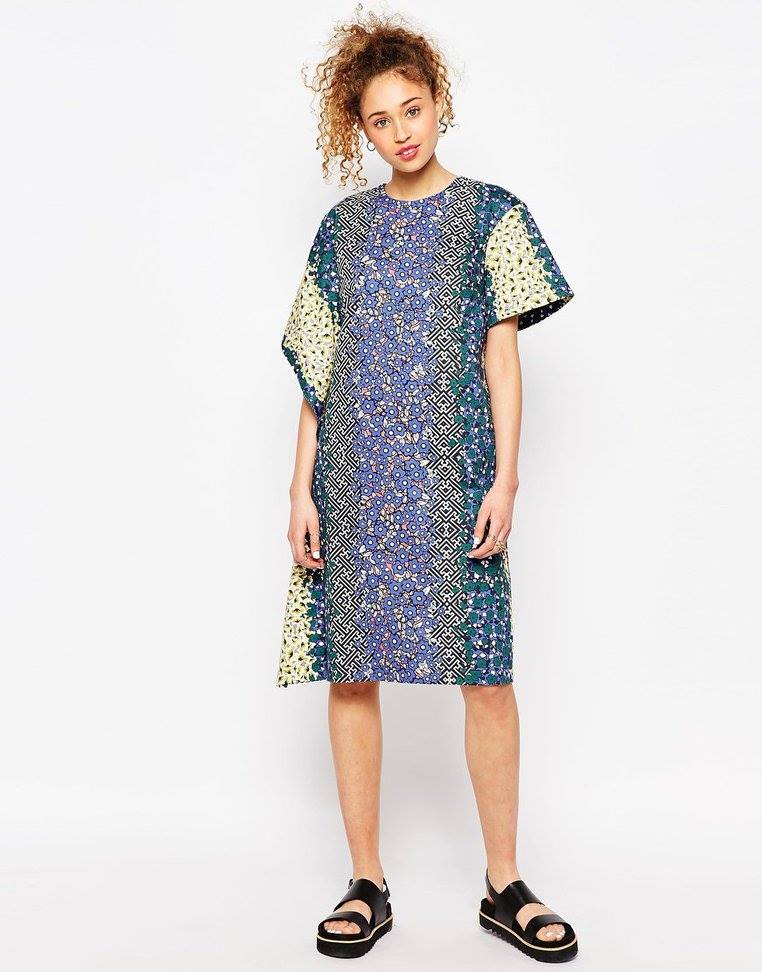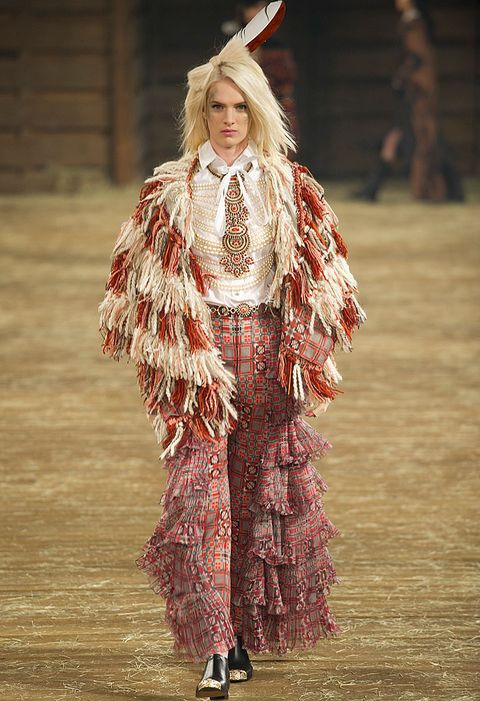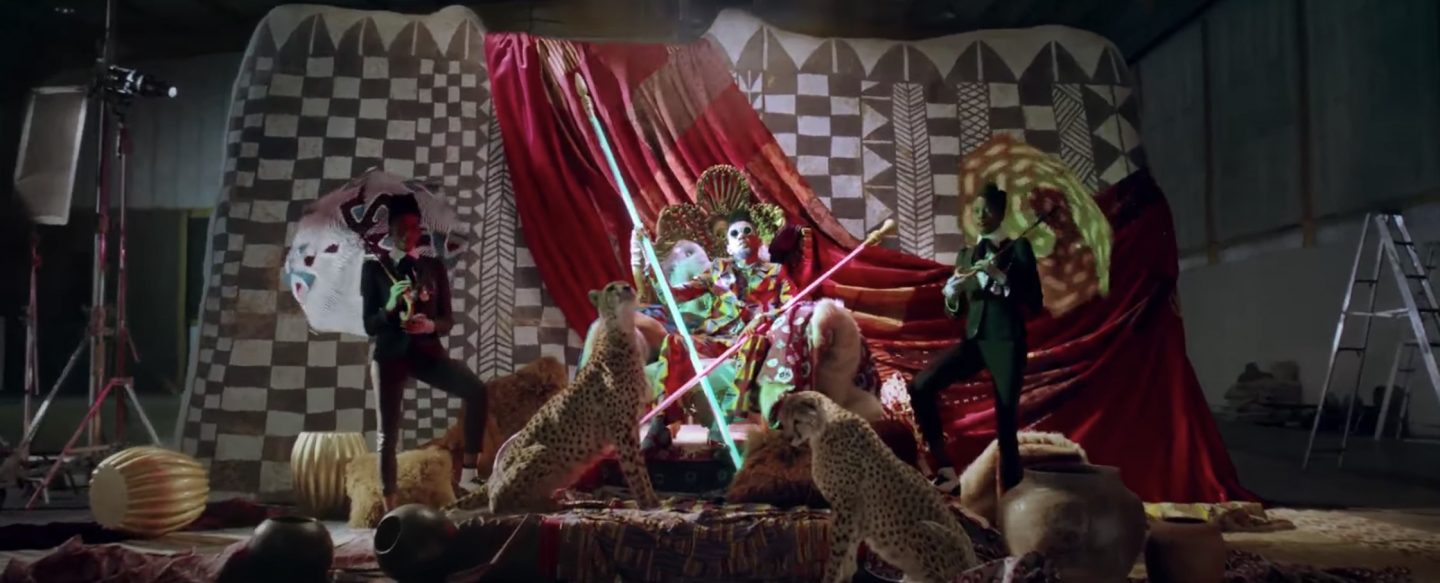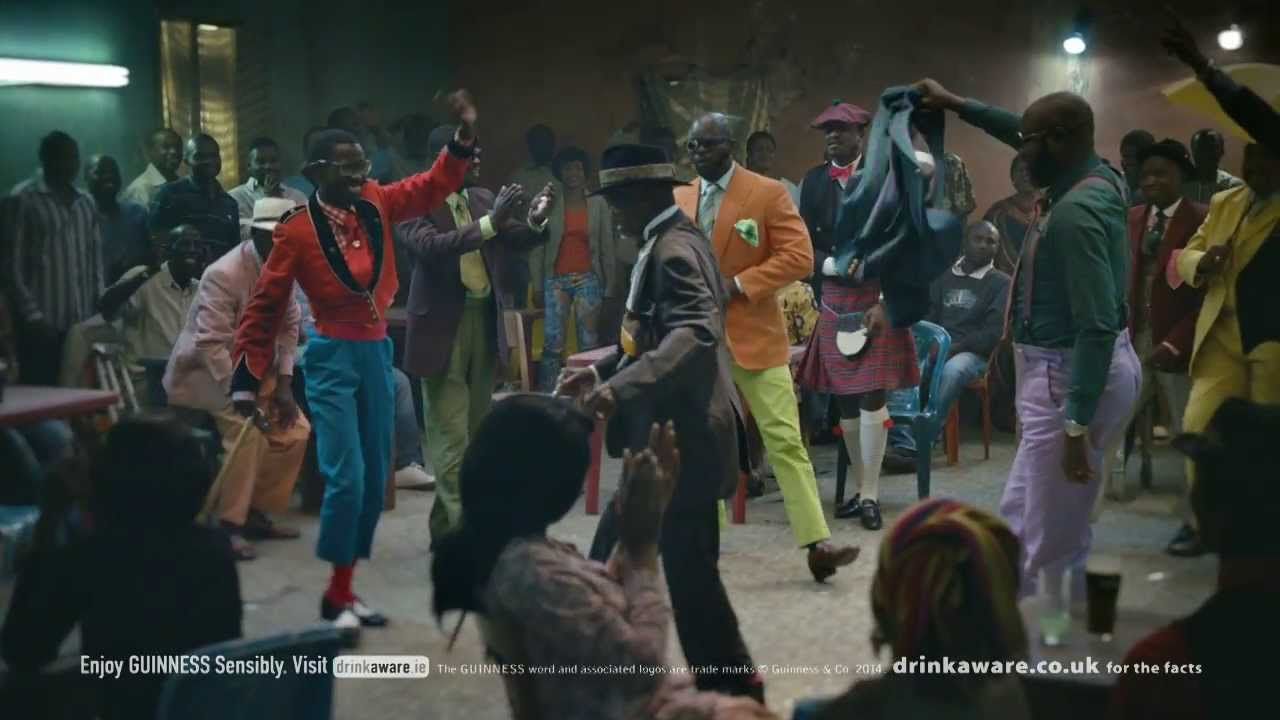Image from Sapeurs — a 2014 short documentary by Guinness
One of 10 items cross-posted from SEMIONAUT.
I’ve recently become obsessed with gorgeous clothes from a fashion brand remixing African fashion with western elements. ChiChiA presents Tanzanian khanga cloth with an East London edge: rips, tailored and boxy shapes. The clothes are glorious – and their marketing reminded me of Guinness’ 2014 ‘sapeurs’ ad, featuring Congolese men who compete to be the most snappily dressed in smartly tailored suits. ChiChiA’s work made me realise just what worked about Guinness’ ad, and gain insight into the dividing line between cultural homage and cultural appropriation.
The difference between fashion and costume is incomprehensibility. If an outfit is full of recognisable signs pointing to a single meaning, it is costume, with a meaning clear enough to take over the wearer and erase her. If its signs clash, it isn’t immediately comprehensible to anyone except the wearer – and it’s fashion.

A full skirt worn with peeptoe heels, a twinset and hairbow is a fifties costume; a full skirt worn with a leather crop-top is fashion.
This dependence on mixed signs is similar to creolisation, in which associations from multiple heritages combine to create a cultural fusion defining itself spatially instead of historically: a country, city, or in the case of fashion, a human body.
Desirable modern personalities are often creolised: either literally, as in the desirability of ethnically mixed bodies in culture (think Rihanna with her green eyes, Chrissy Teigen or African-American albino model Shaun Ross), or in their awareness of many different cultures and aesthetics. A lack of easy comprehensibility forces attention to the person who is the site of creolisation, giving them the authenticity of fashion rather than costume.

Brands often aim to demonstrate creolisation, and land at cultural borrowing. One of the most woeful examples is Chanel, which tried to remix the traditional feathered Native American headdress as a symbol of ‘craftsmanship’ in 2013, and was confronted with near-universal accusations of racism and appropriation. Ultimately, Chanel’s whole show was associated with the ‘basic bitch’, a white girl wearing Native American headdresses to festivals: someone who clings to signs which are both hollow and obviously comprehensible.
This self-presentation lacks cool because it lacks incomprehensibility. The individual basic bitch is not a space where fashion and personality are created, but a wearer of borrowed costume: on a non-Native American, the headdress is a loud failure to be fashion, and a less resilient or smaller brand than Chanel couldn’t have recovered from it.
ChiChiA escapes inauthenticity because its non-western influences come from the designer/founder’s own heritage, in contrast with Chanel’s, but that isn’t all; Guinness’ Irish roots couldn’t be less relevant to the Congo, and their ad was still well-received, seen as expanding rather than devaluing the drink brand. What works is that these brands are reflecting already-creolised cultures: sapeur fashion arises from a long history of cultural crossover, and ChiChiA evokes London’s status as one of the world’s most powerful creolising societies.
In both examples, signs from different cultures are translated by and into each other in fashion, as in creolisation. Elements which resist translation come to signify their own origins, often over and above their original culture-specific meanings.
ChiChiA’s marketing towards creolised cultures, as well as around them, is reflected in its founder’s summary of Tanzanian-heritage women’s reactions to her fashion: ‘You wear a khanga at home to clean the house, not to a party.’ That’s why she doesn’t make khangas: she mixes the khanga cloth with western structures like crop tops, shoulderpads and pencil skirts. Sapeur fashion also mixes classic European tailoring with bright African colours, making the resulting outfit an embodied assertion of creolisation. Creolisation’s ability to give khanga the higher-level sign of Tanzanian-ness, and erase its culture-specific meaning of casualness, is like the three-piece suit’s ability to signify European-ness rather than stuffy formality when worn, in bright colours, in the Congo.
These jostled signs, creolised into incomprehension, are the type of existing cultural interaction that brands can borrow from without accusations of appropriation. Guinness’ sapeur association isn’t a borrowing of an untranslated sign; it’s associating Guinness with creolisation itself.
For an example of larger-scale marketing towards rather than around creolisation, we can look at Guinness’ post-sapeur Africa campaign, Made Of Black, which figures blackness as creolisation itself.

This definition is common among African-Americans, whose culture is arguably the most successful of the 20th century. Made Of Black’s flagship ad uses Kanye West’s ‘Black Skinhead’ as soundtrack, a song whose title’s creolisation is so tense that it’s almost an oxymoron, associating a punk movement with strong white supremacist undertones with black power. The song includes lyrics in praise of the main driver of literal creolisation, interracial sex, and is also a valorisation of a culture defined as ‘black’ but in fact creolised; a distinction which becomes more obvious when African-American cultural signs are positioned beside un-American African signs in Guinness’ video.
Guinness positions its ‘blackness’ as necessarily polyphonic, presenting many different African celebrities in the ad. It also includes multiple bright colours on the face of a black model, and mixtures of various African, European and African-American influences – such as breakdancers against a background of north African/ Arabic-inspired prints. This combination invites Africans to identify themselves with the creolisation of African-Americans,positioning such creolisation as desirable: an aim with obvious benefits to a European product trying to become an important element in African cultures.
But Guinness’ blackness is not only ethnic. The ad points to ‘black’ as a ‘mindset’ or ‘attitude’ incorporating diversity, cultural rebellion and the site of fashionable identity mixing, pulling on cultural connotations of black as the colour into which all colour dissolves. This positioning of blackness as a space where many diverse associations meet has been prefigured by rappers playing with the concept of blackness. For instance, in Jay Z’s ‘Run This Town’ video, the “all black everything” lyric and aesthetic refer to clothing as well as ethnicity; to the anarchists using black as a symbol of countercultural freedom and the fashionistas using it as noncommittal catchall chic, as well as the immediate meaning of negritude or black power.
Black as creolised space is a very powerful association. But Guinness’ discussion of blackness is made tense by its uncertain positioning of creolisation. The beer’s blackness is simultaneously portrayed as already creolised, a space where various cultures have found a home; and at the same time, allied to the extremely broad space of Africa and its multiple non-creolised cultures.
This causes uneasiness: is Guinness a site, like ChiChiA, or an element?
And that tension may be the cause of the ad’s mixed reception, as Africans remain unsure who is being ‘made’ in its tagline. Is Guinness paying homage to the role of black or African drinkers in creating its brand, or are they being encouraged to pay homage to its role in their racial/ cultural identity?
Power lines are the faultlines in any society, but especially so in creolised cultures, built at the same time by and in resistance to colonising elements. ChiChiA’s founder can own creolisation as a black woman in a way that is politically problematic for Guinness to use as a European brand. The campaign’s success will test and be tested by the extent to which Guinness is already embedded in the African cultures that ‘Made of Black’ targets.
Original publication date: August 2016.


